What You Need to Know About Industrial Safety and Health Engineer
Occupation Description Plan, implement, and coordinate safety programs, requiring application of engineering principles and technology, to prevent or correct unsafe environmental working conditions.
Daily Life Of an Industrial Safety and Health Engineer
- Recommend process and product safety features that will reduce employees’ exposure to chemical, physical, and biological work hazards.
- Review plans and specifications for construction of new machinery or equipment to determine whether all safety requirements have been met.
- Report or review findings from accident investigations, facilities inspections, or environmental testing.
- Write and revise safety regulations and codes.
- Inspect facilities, machinery, and safety equipment to identify and correct potential hazards, and to ensure safety regulation compliance.
- Install safety devices on machinery, or direct device installation.
Featured schools near , edit
Industrial Safety and Health Engineer Required Skills
Industrial Safety and Health Engineers state the following job skills are important in their day-to-day work.
Reading Comprehension: Understanding written sentences and paragraphs in work related documents.
Writing: Communicating effectively in writing as appropriate for the needs of the audience.
Speaking: Talking to others to convey information effectively.
Critical Thinking: Using logic and reasoning to identify the strengths and weaknesses of alternative solutions, conclusions or approaches to problems.
Active Listening: Giving full attention to what other people are saying, taking time to understand the points being made, asking questions as appropriate, and not interrupting at inappropriate times.
Systems Evaluation: Identifying measures or indicators of system performance and the actions needed to improve or correct performance, relative to the goals of the system.
Types of Industrial Safety and Health Engineer
- Safety Team Leader
- Environmental Health and Safety Engineer (EHS Engineer)
- Safety Professional
- Safety Coordinator
- Environmental Health and Safety Director (EHS Director)
Is There Going to be Demand for Industrial Safety and Health Engineers?
There were about 25,900 jobs for Industrial Safety and Health Engineer in 2016 (in the United States). New jobs are being produced at a rate of 8.5% which is above the national average. The Bureau of Labor Statistics predicts 2,200 new jobs for Industrial Safety and Health Engineer by 2026. There will be an estimated 1,900 positions for Industrial Safety and Health Engineer per year.
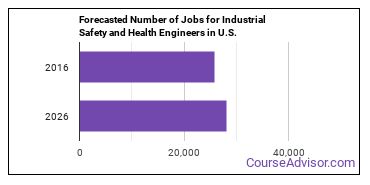
The states with the most job growth for Industrial Safety and Health Engineer are North Dakota, Utah, and Nevada. Watch out if you plan on working in Alaska, Wyoming, or Vermont. These states have the worst job growth for this type of profession.
How Much Does an Industrial Safety and Health Engineer Make?
Industrial Safety and Health Engineers make between $53,170 and $142,970 a year.
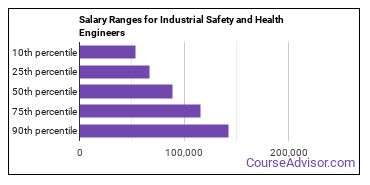
Industrial Safety and Health Engineers who work in District of Columbia, New Mexico, or Delaware, make the highest salaries.
How much do Industrial Safety and Health Engineers make in each U.S. state?
| State | Annual Mean Salary |
|---|---|
| Alabama | $97,260 |
| Alaska | $83,460 |
| Arizona | $74,580 |
| Arkansas | $78,030 |
| California | $107,290 |
| Colorado | $103,940 |
| Connecticut | $99,350 |
| Delaware | $107,040 |
| District of Columbia | $118,890 |
| Florida | $80,170 |
| Georgia | $78,780 |
| Hawaii | $82,190 |
| Idaho | $95,430 |
| Illinois | $88,320 |
| Indiana | $88,220 |
| Iowa | $75,400 |
| Kansas | $86,210 |
| Kentucky | $85,560 |
| Louisiana | $89,190 |
| Maine | $79,700 |
| Maryland | $96,670 |
| Massachusetts | $99,090 |
| Michigan | $88,980 |
| Minnesota | $93,150 |
| Mississippi | $67,720 |
| Missouri | $92,890 |
| Montana | $76,080 |
| Nebraska | $85,490 |
| Nevada | $102,030 |
| New Hampshire | $87,960 |
| New Jersey | $106,080 |
| New Mexico | $116,350 |
| New York | $95,530 |
| North Carolina | $78,570 |
| North Dakota | $73,820 |
| Ohio | $92,710 |
| Oklahoma | $94,550 |
| Oregon | $86,700 |
| Pennsylvania | $107,950 |
| Rhode Island | $84,120 |
| South Carolina | $80,980 |
| South Dakota | $70,120 |
| Tennessee | $83,960 |
| Texas | $104,580 |
| Utah | $80,070 |
| Vermont | $83,770 |
| Virginia | $96,810 |
| Washington | $99,180 |
| West Virginia | $78,490 |
| Wisconsin | $67,360 |
What Tools do Industrial Safety and Health Engineers Use?
Below is a list of the types of tools and technologies that Industrial Safety and Health Engineers may use on a daily basis:
- Microsoft Excel
- Microsoft Word
- Microsoft Office
- Microsoft PowerPoint
- Microsoft Access
- SAP
- Microsoft Project
- The MathWorks MATLAB
- Computer aided design CAD software
- Records management software
- Root cause analysis software
- Computational fluid dynamics CFD software
- Failure mode and effects analysis FMEA software
- Material safety data sheet MSDS software
- Electronic design automation EDA software
- Survey software
- Fault tree analysis FTA software
- Human modeling software
- Computer based training software
- Reliability analysis software
How to Become an Industrial Safety and Health Engineer
Are there Industrial Safety and Health Engineers education requirements?
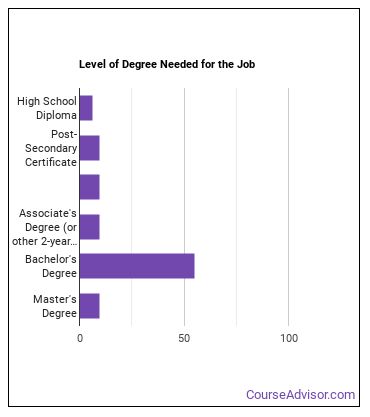
What work experience do I need to become an Industrial Safety and Health Engineer?
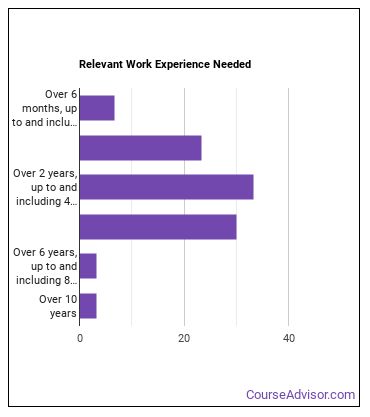
Where do Industrial Safety and Health Engineers Work?
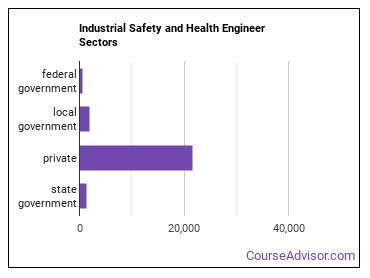
The table below shows the approximate number of Industrial Safety and Health Engineers employed by various industries.
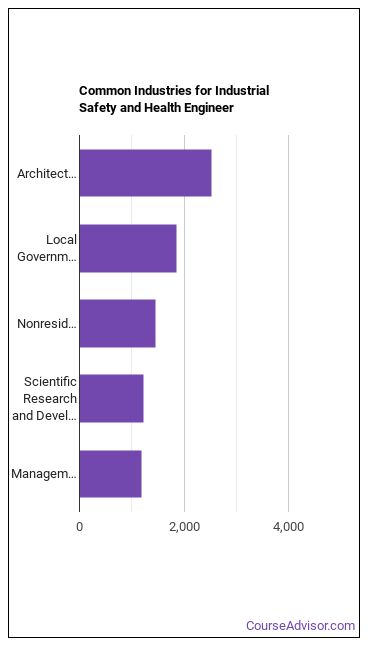
You May Also Be Interested In…
Those thinking about becoming an Industrial Safety and Health Engineer might also be interested in the following careers:
References:
Image Credit: U.S. Air Force photo by Staff Sgt. Alesia Goosic via Public Domain
More about our data sources and methodologies.
Featured Schools
 Request Info
Request Info
|
Southern New Hampshire University You have goals. Southern New Hampshire University can help you get there. Whether you need a bachelor's degree to get into a career or want a master's degree to move up in your current career, SNHU has an online program for you. Find your degree from over 200 online programs. Learn More > |
